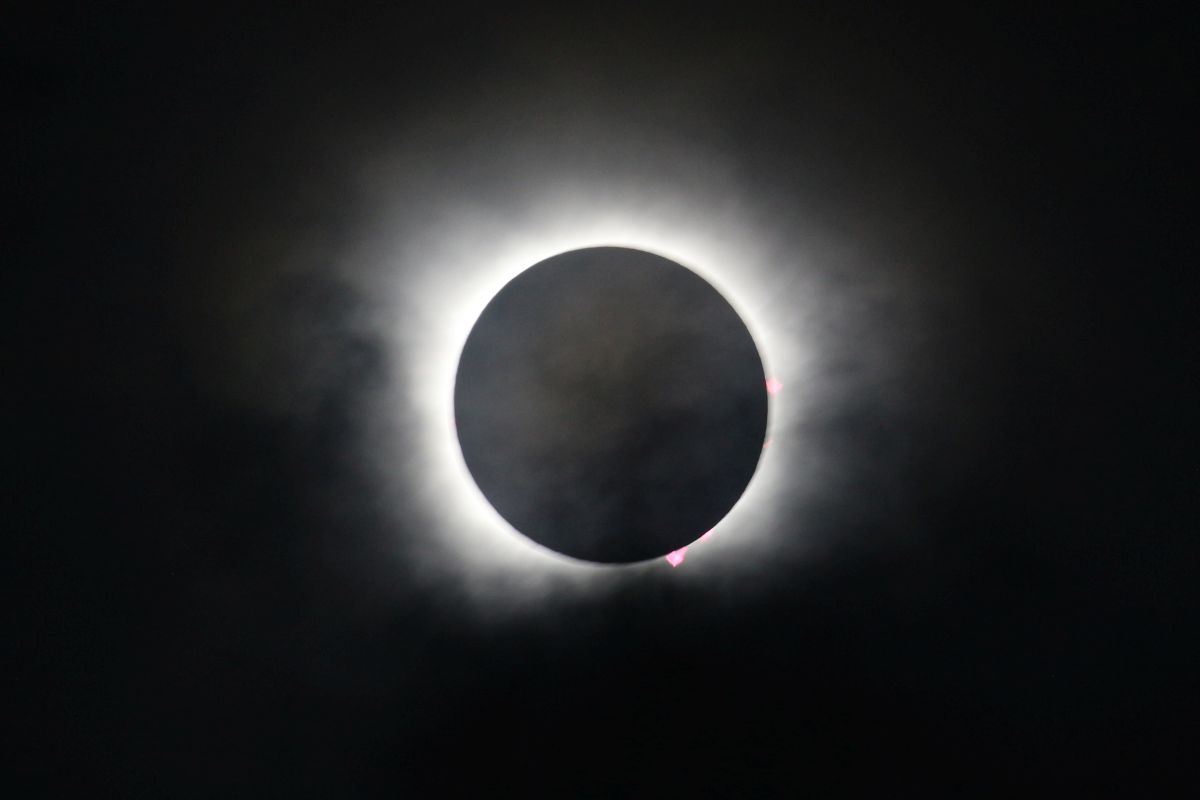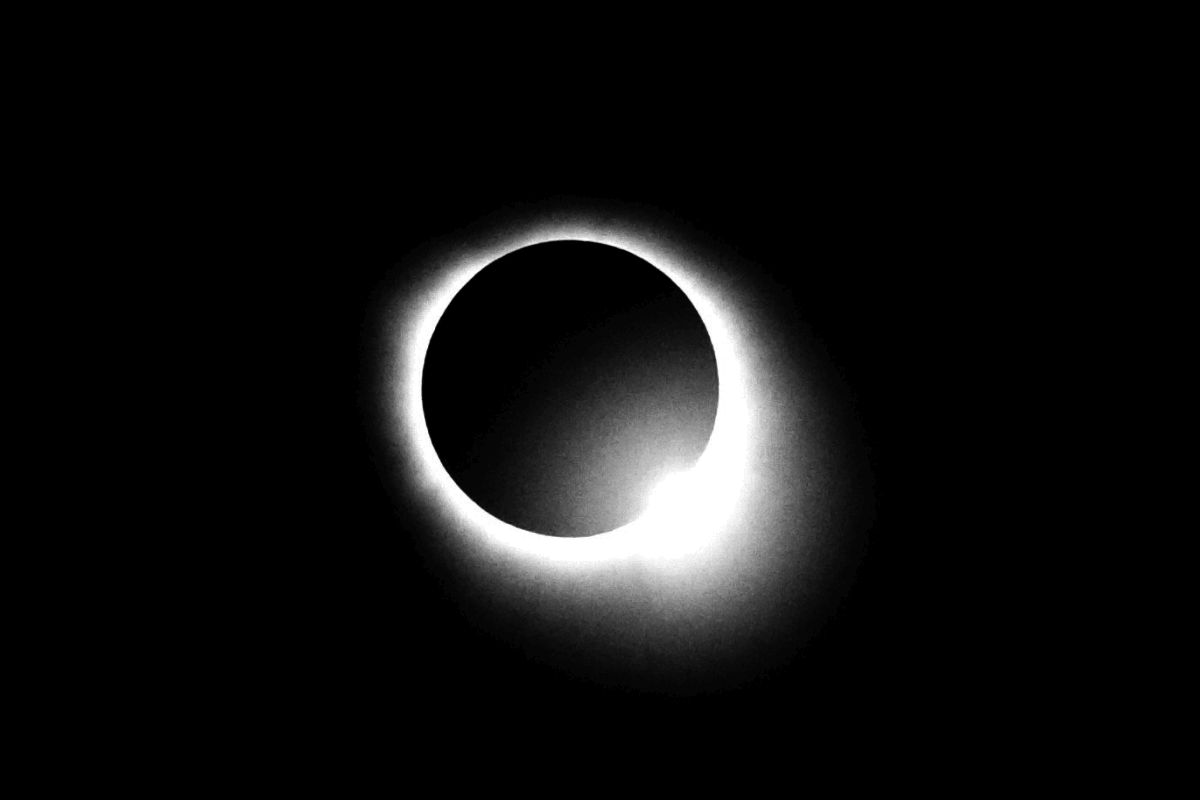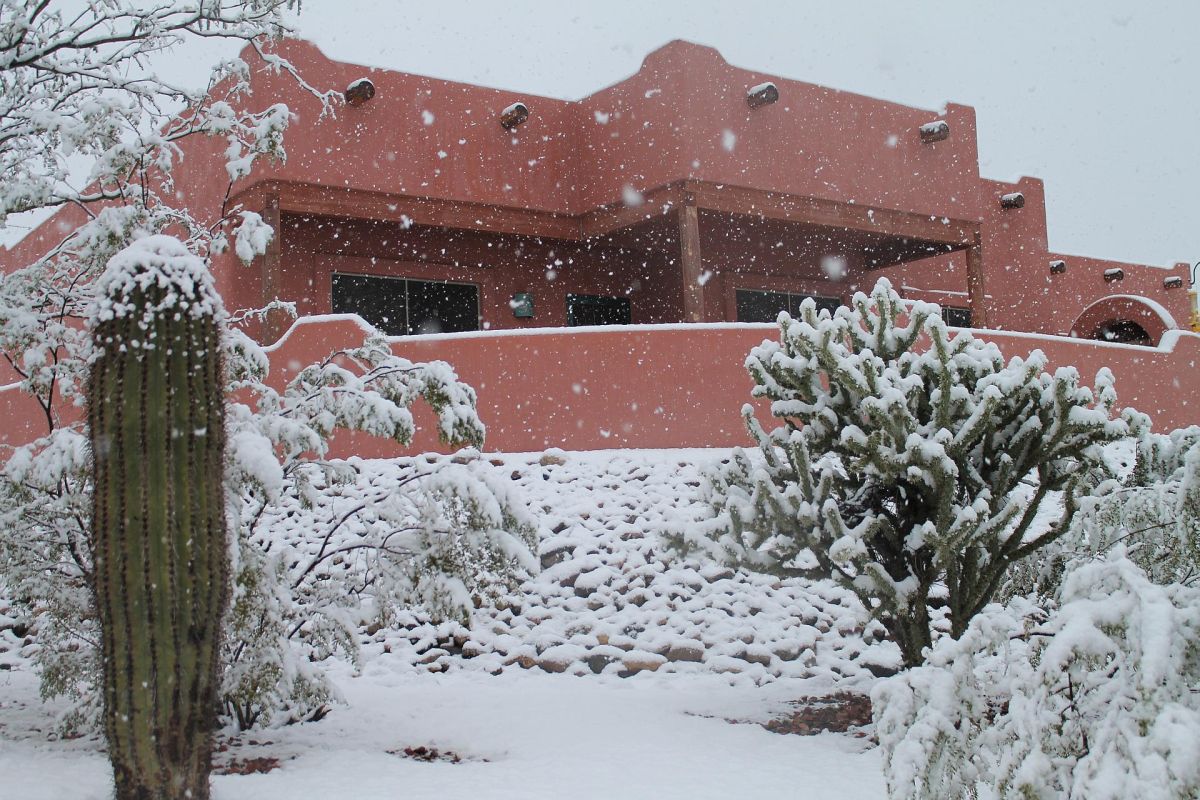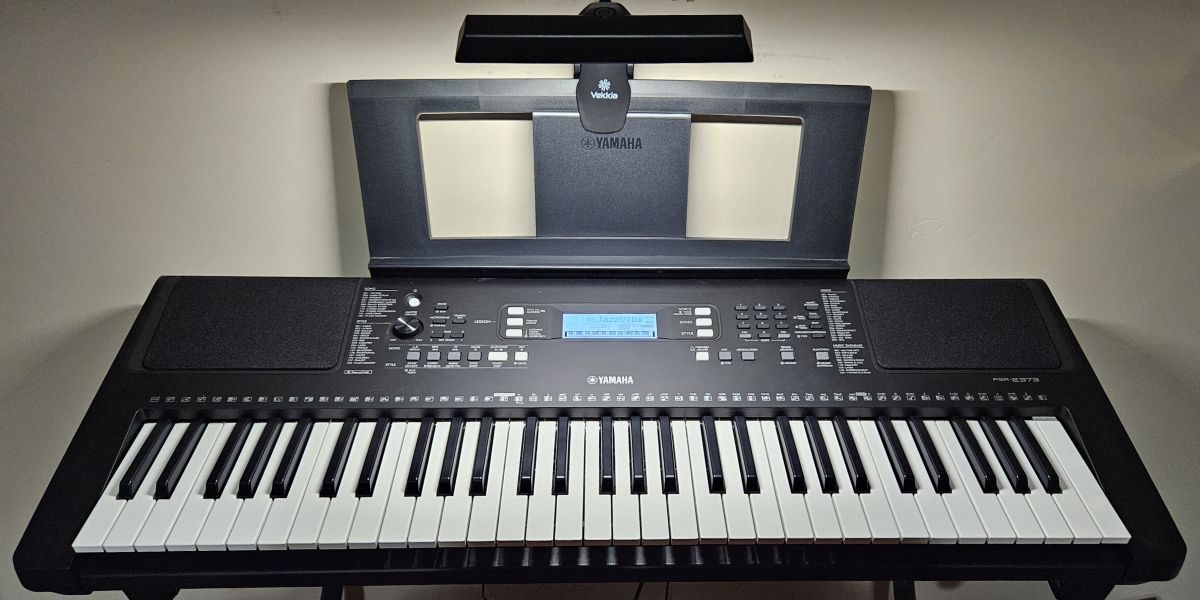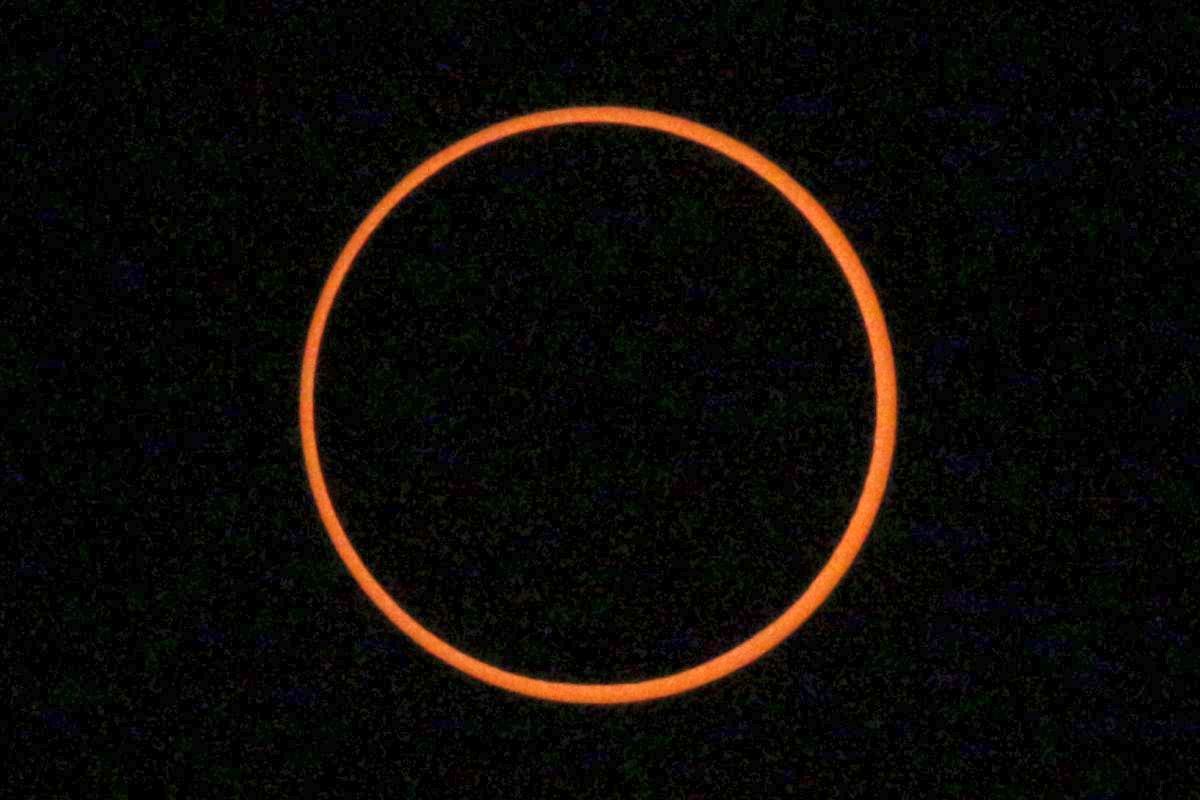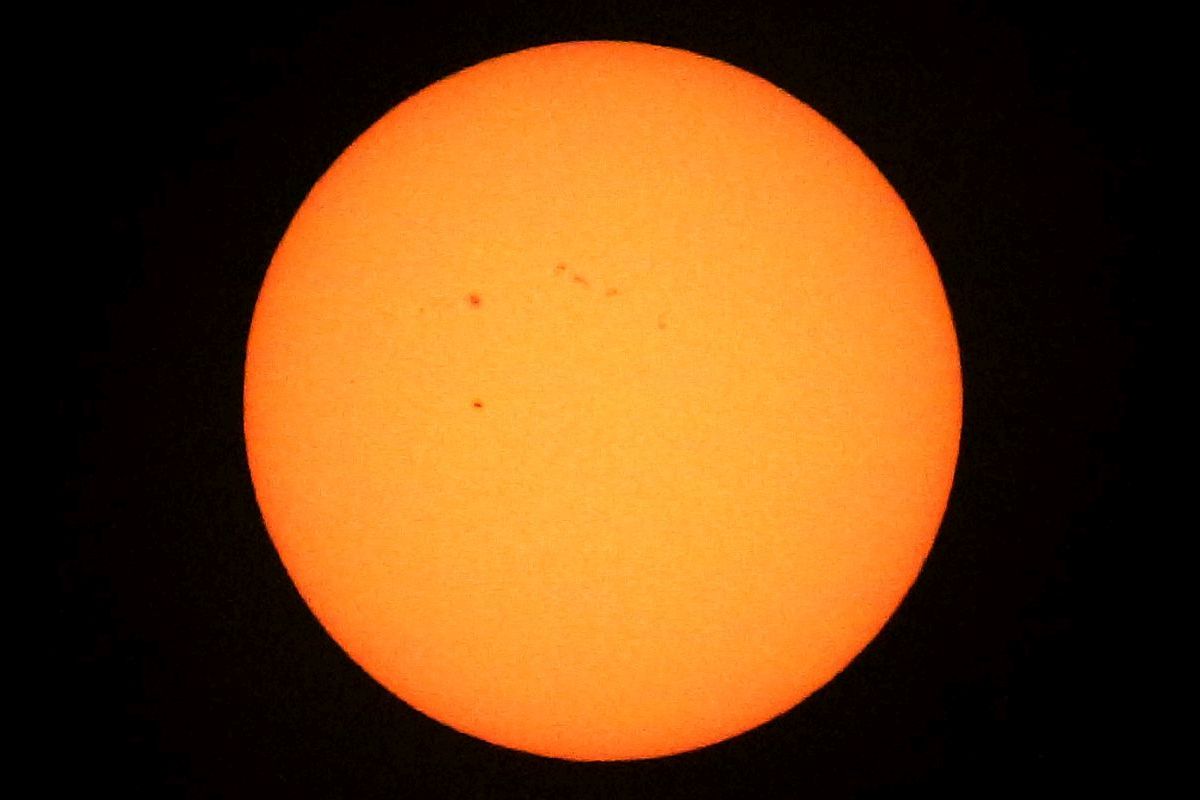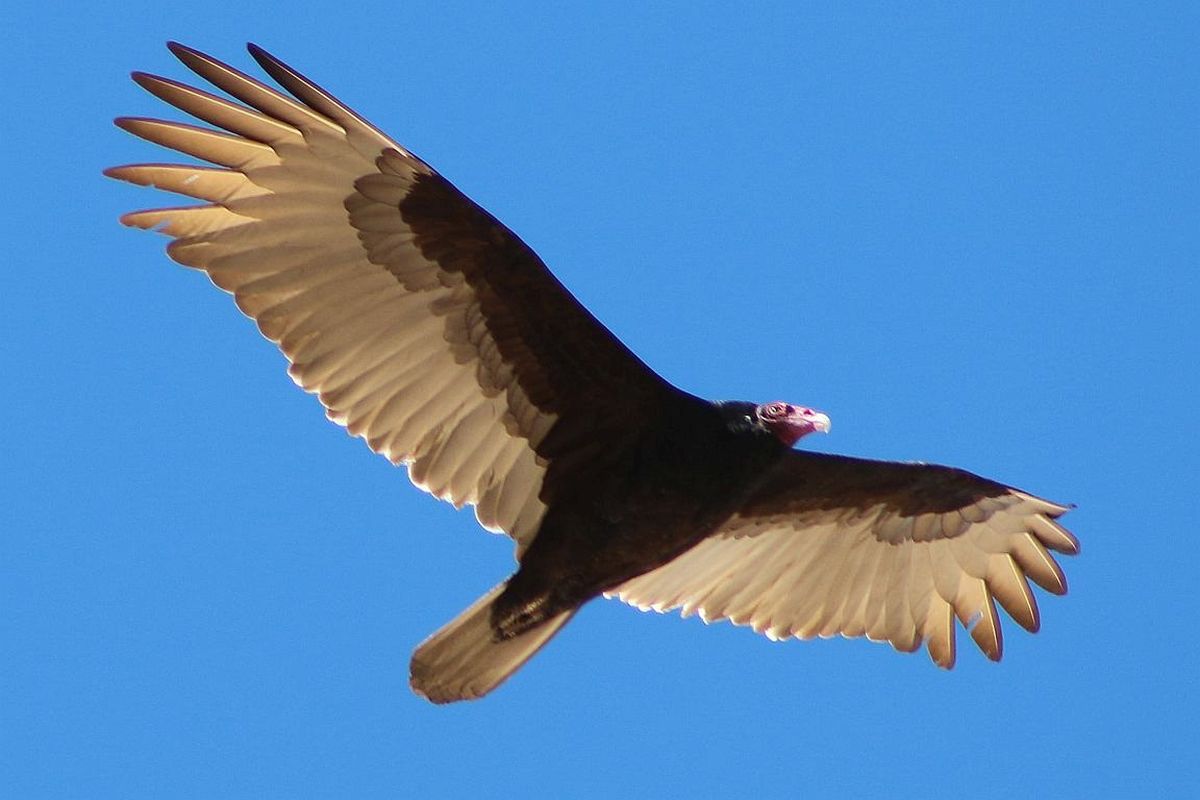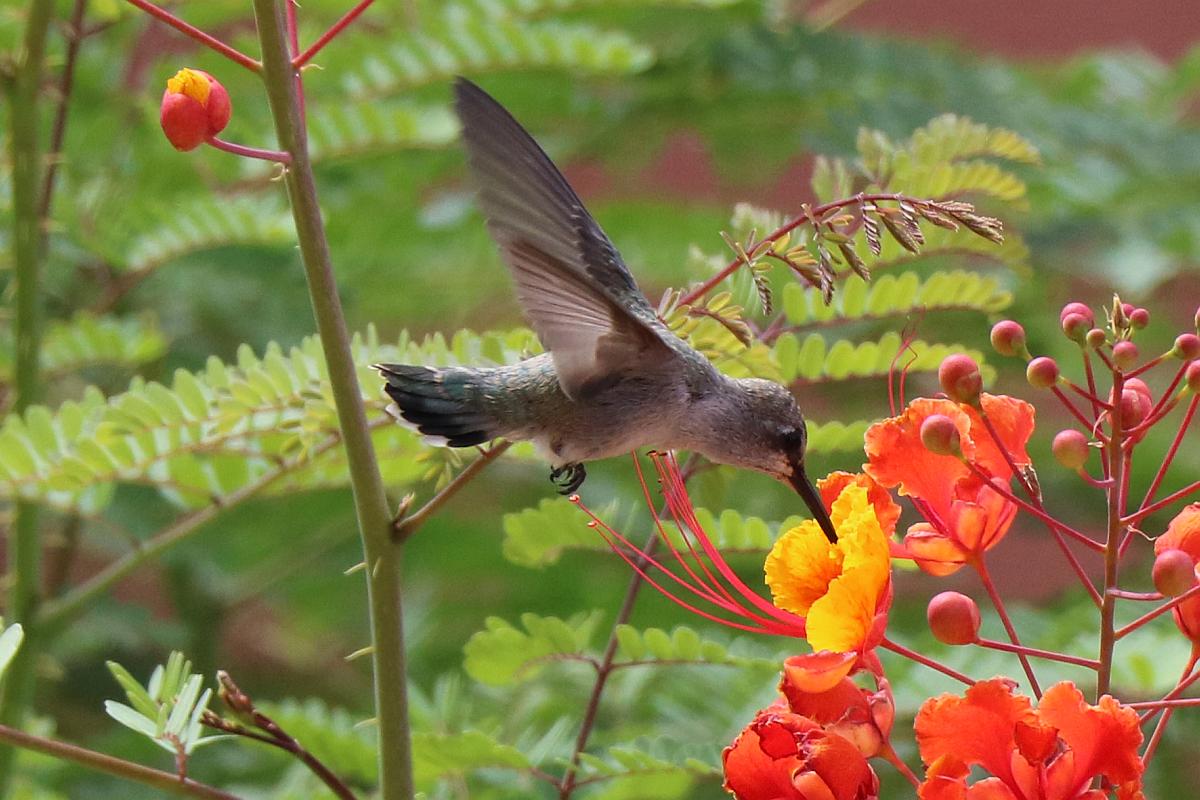What we anticipated to be a dismal forecast for the weather on Eclipse Day, turned out to be not so bad, especially during the totality phase. Clouds passed between us and the sun often, but then opened up for partial phase glimpses and during totality, most of the four minutes of darkness, we were able to see the corona and in the image below, a couple of prominences at two-thirty and five-thirty on the disc. The 5:30 prominence was huge.
I wasn’t very well-prepared to take photos given the woeful forecast, which affected my motivation, but I was able to attach the big 100-400mm telephoto lens and shoot bunches of photos hand-held (no tripod) and had a few fair results including the one above. Verna had similar results and captured the “Diamond Ring” at the end of the totality show:
As I’m blogging this, we are getting some moderate to heavy thundershowers with lightning and thunder, but, Praise the Lord, no tornadoes. The precipitation knocked out the satellite TV a few times, but it is up and running now.
We’re here until Wednesday and then off to other parts of Texas south of us towards the Gulf of Mexico and thence via westerly routes heading back to Arizona over the next several days.

